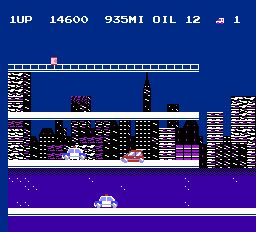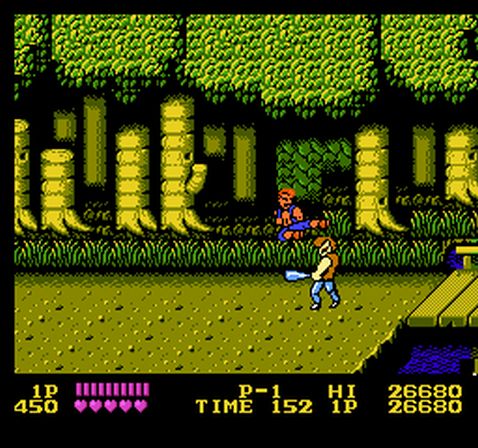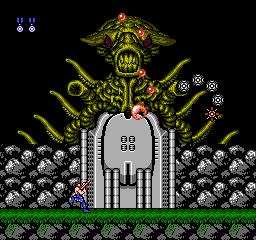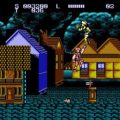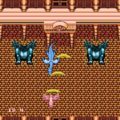Developer: Nihon Micom Kaihatsu Publisher: Jaleco Release: 05/88 Genre: arcade
I was never fond of City Connection growing up. The core premise is sound but for some reason it never clicked with me. It was also not a popular title among my friend group which allowed me to easily ignore it. This is why it is so surprising to learn that the game is incredibly popular in Japan and fondly remembered. Coming back to it with fresh eyes after all these years I have grown to appreciate the nuances in its mechanics. However I still do not think it is a good score attack game and gets old fast. The thrills do not last with this one.
The premise of City Connection is simple. As you drive your Honda hatchback you will paint the road white in your wake. The goal is to completely paint all of the streets white in each level. This is not as easy as it sounds. The maps have four levels of broken roads that you can jump between at any time. The police are in hot pursuit at all times and are just as mobile as you are. Your only means of offense are oil cans you pick up as you go which can stun the cops and leave them vulnerable to being hit. Despite the numerous oil cans combat is not the focus of the game and a means to an end.
The control is the greatest aspect of City Connection. Even though you are in a car it is amazingly agile and mobile even in the air. You can turn on a dime and leap like Mario. You can even switch direction while falling which is a crucial technique to navigate the series of platforms. The only limit is you commit every time you execute a long jump. There are some frustrations when you just want to hit one last little strip and have to navigate the whole damn map to reach it but that is part of the game.
While I like the core premise of City Connection I do not find it compelling very long. Once you have completed the first level you have seen everything it has to offer. The backdrops and the layout change but there are no new mechanics that make the game fun. It lacks the complexity of the maze layouts of Pac-Man that affects how you avoid the ghosts to complete the levels. One or two levels play with the size of the streets and their distance from one another. That is legitimately great because it is unexpected. More of that would have made the game better. As it is the game gets old fast.
In porting the game to the NES some surgery and alterations were made that make it both easier and harder at the same time. Painting the road is simpler as it is done in blocks rather than pixel by pixel. It sounds like a minor change but has a massive impact on gameplay. The levels are smaller and more compact which negatively affects the game. Climbing to higher levels is harder and frustrating because of how clustered the platforms are. That means spending more time on lower levels which produces more cats and spikes to impede your progress. This change throws the game’s balance off and can be annoying to deal with. As an early NES release (in Japan City Connection released in 1985) I can see why it was necessary but it could have used some balance adjustments.
Unlike the arcade game the NES version of City Connection is not as robust. Whereas the arcade game had twelve levels this one has only seven. It also does not have an ending. Once you clear level seven () the game loops infinitely. I like a good score attack every now and then even if it is not my preferred style of game but City Connection lacks the variety and nuances that make chasing high scores over a long period of time fun. By the time you reach the first loop you will be grateful it is over rather than look forward to doing it all over again.
In Closing
I have come around to City Connection somewhat and do not think it is as bad as I once thought. But I still would not recommend it. I like the general premise but do not think it is varied enough to keep players interested for long.


